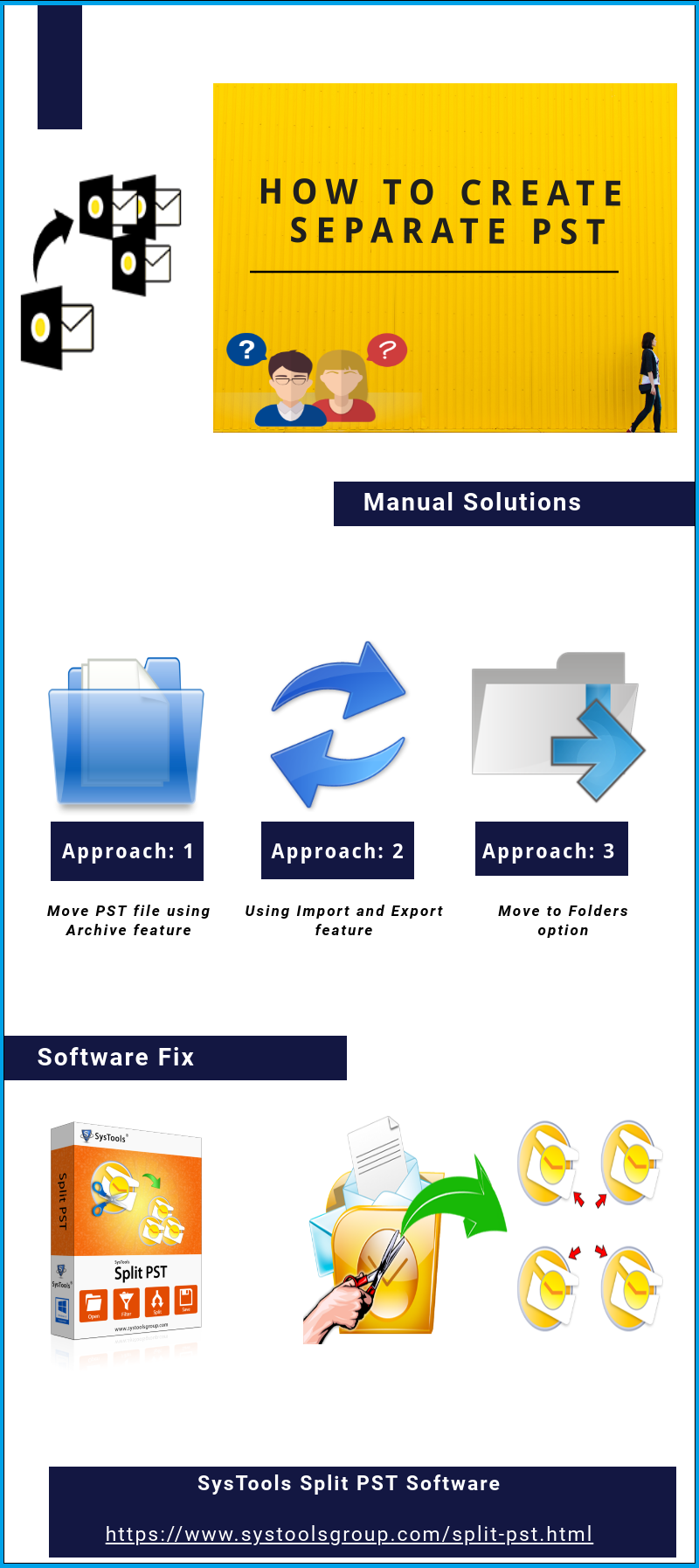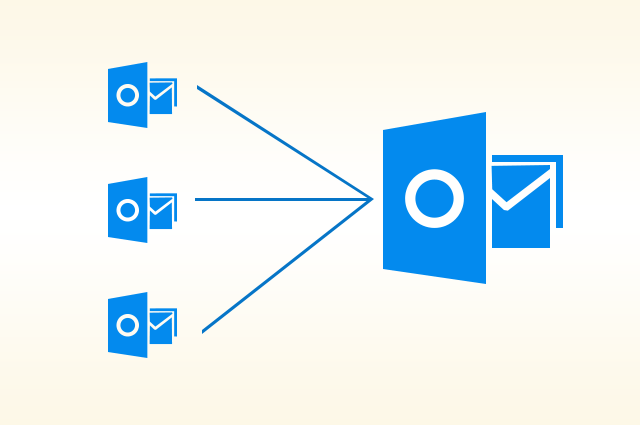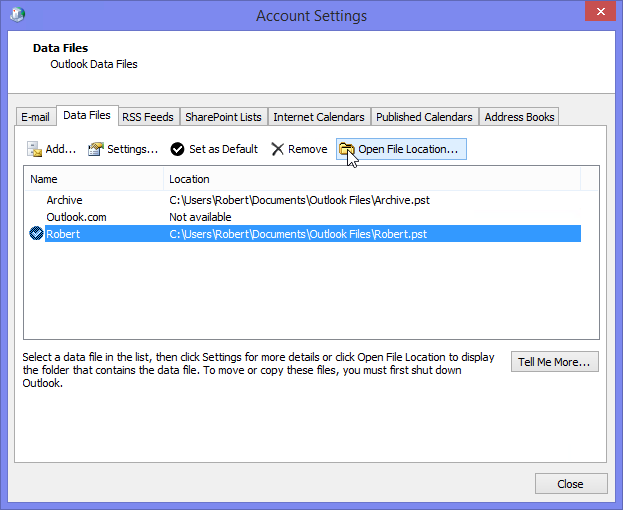Pst Files In Outlook
And like SysInfoTools PST File Viewer, this tool can also open and read corrupt PST files without any issues. Download PST Viewer. Free PST Viewer. Free PST Viewer from GainTools is yet another software developed to enable PC users to open and view PST files without the need of Office Outlook software.
Helping people with computers.. one answer at a time.
Outlook keeps all of your information in a PST or Personal STorage file. It's often important to be able to locate it, and I'll show you how.
by Leo A. Notenboom, © 2011
Unlike many other email programs, Outlook places all of your information intowhat it calls a 'PST' or Personal STorage (orjust 'store') file.
All of your email, contacts, calendar entries, notes, journal, and whateverelse that you choose to use Outlook for are stored in PST files.
It can often be important to know where the PST file is kept, perhaps forrecovery purposes, but more often for backup.
It's not always easy to find the PST file, so I'll show you three separateways to locate Outlook's PST file.
•
Video
Transcript and higher resolution version provided near the end of thearticle.
Using Outlook 2010
In Outlook, on the left-hand side, the default view includes a list ofaccounts and folders.

Right-click the top-level item: 'leo@ask-leo.com' in the examplebelow:
Then click Open File Location. The result will beWindows Explorer opened to the folder containing the PST file:
As you can see in this example, the PST is located inc:UsersLeoNMy DocumentsOutlook Filesleo@ask-leo.pst

Using Windows Search
Click the Start menu to expose the Search box:
Type *.pst into the search box:

As you can see, even before pressing Return, Windows Search lists the .pstfiles found on the machine.
Right-click the file and click Open filelocation:
The result is, once again, Windows Explorer opened on the folder containingthe .pst file.
Using Command Prompt
Start the Windows Command prompt by clicking the Start button,All Programs, Accessories, and thenright-clicking Command Prompt and clicking Run as administrator:
In Command Prompt, type:
followed by Enter to change the current directory to the root of the drive,and then type in
Again followed by Enter, to search the entire drive for all .pst files.
As you can see, the PST is located once again in the same folder asbefore.
Video Transcript & HD
Transcript
Hi everyone, I'm Leo Notenboom for AskLeo!. I'm going to show you three different ways to find Outlook's .pstfiles.
We'll start with Outlook itself. This is a relatively fresh install ofOutlook 2010. Off to the left, you'll find a list of accounts and the foldersassociated with those accounts. You can right-click on the account name andopen file location. There you will find Windows Explorer opened on the folderthat contains your .pst file. In previous versions of Outlook, there may bedifferent labels associated here but simply right-click on the top-level itemto get either the File Properties or if it's available, Open File Location.
But let's say that the Outlook is too complex or we're not looking at the version that you are. Instead, let's use Windows own Search. What we're going to do issearch for *.pst and sure enough, the very first thing that it comes up with is our.pst file. We can right-click on that and open file location and once again,we're actually in the folder, looking at the pst file.
Now, there's a third option for folks who like to use the command line. Whatwe have to do, however, is go to All Programs; Accessories; right-click on CommandPrompt and make sure to run it as Administrator. Once we get there, type in cd,space, backslash, Enter, which moves the current directory or current folder tothe root of the drive. Do a dir for a directory listing; slash s to search allsub directories; star dot pst to locate all .pst files; enter and Windows goesoff and searches. You can see that we've immediately found the .pst file thatwe located earlier. Had there been more than one .pst file on this machine, thiscommand would have located it.
That's it! Three different ways to find your .pst files. I'm Leo Notenboomfor Ask Leo!.
Article C4948 - October 7, 2011 «»
Not what you needed?
You may also be interested in:
Where is my Outlook 'PST' file located? Outlook's PST or Personal STore is a single file that holds your email, contacts and more. You can use Outlook itself to find the location of the file.
How do I repair a corrupt .pst file? .pst files are Microsoft Outlook's email and data storage containers. They can occasionally be damaged, but Microsoft Office includes a repair tool.
How do I upgrade my Outlook PST to 2003 format? Outlook's file format changed from Outlook 2000 to Outlook 2003. Unfortunately upgrading your existing Outlook PST is not automatic, and not easy.
October 7, 2011 7:45 PM
You can also.
1. go into 'Control Panel'
2. go into 'Mail'
3. click on the 'Data Files..' button
October 11, 2011 1:14 PM
one caveat - at least on older versions of windows.
the 'show hidden files and folders' radio button must be selected or you will not find any '.pst' files. I believe by default, the setting is 'do not show hidden files and folders'
October 11, 2011 1:41 PM
If Outlook is open, a simple way is from within the left hand Folders pane, right click on the top most parent folder (named Personal Folder by default) of the PST file you want. Select Properties then Advanced; you will see the Filename & path location for your selected PST file.
This method is best when you have multiple PST files open that are stored in different locations. But Outlook must be running and your PST file open for this to work.
BradOctober 12, 2011 11:06 AM
PST files. Now that you know where they are, what are you going to DO with 'em?
A 'How To' in regard to manually creating a .pst backup and how to RECOVER data using the .pst would be a good thing.
And, now that you know where they are, COPY them to some other place: Like your external drive you use to back up other stuff.
JacobOctober 12, 2011 1:11 PM
Default location of PST files:
In Windows XP, the PST file is located at:
C:/Documents and Settings/%username%/Local Settings/Application Data/Microsoft/Outlook/
In Windows Vista and Windows 7, this location is:
C:/Users/%username%/AppData/Local/Microsoft/Outlook/
There is also a free Microsoft developed Outllook add-in tool that can be used to backup your pst file. It can be found at http://www.microsoft.com/downloads/details.aspx?FamilyId=8B081F3A-B7D0-4B16-B8AF-5A6322F4FD01&displaylang=en
To view the pst file as one of the above comments states with windows explorer you need to unhide hidden files.
Pst Files In Outlook 2007
Windows XP by following the steps outlined below:
1. Start Windows Explorer.
2. On the Tools menu, click Folder Options.
3. Click the View tab.
4. Under Hidden files and folders, click Show hidden files and folders, and then click the OK button.
To show hidden files and folders in Windows Vista and 7, do the following:
* Go to the Control Panel.
* Click Appearance and Personalization.
* Click Folder Options.
* Click the View tab.
* Under Advanced Settings, click Show hidden files and folders, and then click OK.
I credit this information from http://www.pstfilerepair.net
Having had a pst file crash on me I can speak to the importance of making a backup. I have been using the add-on mentioned to backup my pst file as well as a full image backup program.
SauvikFebruary 17, 2012 9:21 AM
Hey leo,
Im facing a problem of 'multiple occurrence' of the same pst file on the left hand pane of the outlook window. like for the same email Id it is showing twice the same email id along with the Archive dropdown list.
help.!!
•
Comments on this entry are closed.
If you have a question, start by using the search box up at the top of the page - there's a very good chance that your question has already been answered on Ask Leo!.
If you don't find your answer, head out to http://askleo.com/ask to ask your question. Free download key for overwatch.
Outlook stores emails, address book entries, and other data in a PST (Outlook Personal Information Store) file. If you made a backup of the PST file or need information from a different PST file, restore it through Outlook. Losing this information can be scary, but Outlook makes it really simple to restore the data so that you can recover your Outlook contacts and emails.
Instructions in this article apply to Outlook 2019, 2016, 2013, 2010, 2007, 2003; and Outlook for Office 365.
Restore an Outlook PST File for Mail, Contacts, and Data
If you have a backup copy of a PST file and want to restore the data in the PST file, import the backup PST file. You can use this backup PST file to restore the Outlook data to the same computer, to a different computer, or to a different email account.
Pst Files In Outlook 2010
Go to File > Open & Export > Import/Export. In Outlook 2007 and 2003, go to File > Import and Export.
Choose Import from another program or file, then select Next.
Choose either Outlook Data File (.pst) or Personal Folder File (PST) depending on the version of Outlook you use, then select Next.
Select Browse to find and select the PST file that you want to import data from.
Outlook may check for a backup.pst file in the DocumentOutlook Filesfolder. Select Browseto change where it searches.
- Replace duplicates with items imported: Imports all data and replaces data in the existing PST file that is the same.
- Allow duplicates to be created: Imports all data and creates a duplicate of items that are the same. Every email and contact is imported even if these items are in the existing PST file.
- Do not import duplicates: Data that matches the existing file is not imported.
Select the folder to import from (optional), whether to Include subfolders,and where to import. Select Filter to filter certain emails to import.
If you do not have a backup copy of your Outlook data and want to recover the PST file, use a file recovery program and search for .PST as the file extension.
How to Add a New PST Data File to Outlook
If you want to restore a PST file into Outlook and use it as another data file, add the PST file as a second account along with the default one.
Go to File > Account Settings > Account Settings.
In the Account Settings dialog box, go to Data Files.
Select the location of the PST, choose the file name, then select OK.
Highlight the PST file and select Set as Default to make it the new default data file.